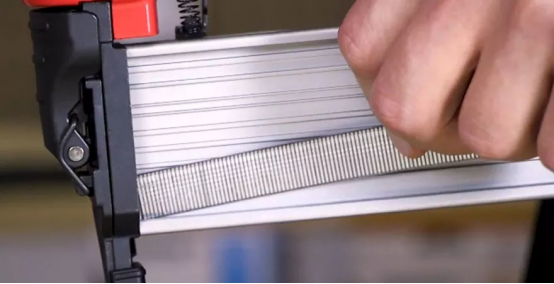
BRAD NAILER VS. FINISH NAILER: WHICH ONE IS RIGHT FOR YOUR PROJECT?
Brad nailer vs finish nailer - If you're into woodworking, carpentry, or home improvement, selecting the right nailer can significantly improve the quality and efficiency of your work.But how do you know which type suits your project best? In this guide, we'll break down the basics of nailers, explore the differences between brad and finish nailers, and provide recommendations for the best projects for each tool.
Nailer Basics - Brad Nailer VS Finish Nailer
A nailer (or nail gun) is a power tool designed to drive nails quickly and accurately into wood or other materials. Nailers save both time and effort compared to manual hammering, making them an indispensable tool for both professionals and DIY enthusiasts.
What is a Brad Nailer
A brad nailer is a specialized nail gun designed for precision work, using 18-gauge brad nails that are thin and discreet. These nails are ideal for delicate woodworking projects where a strong hold is needed without splitting the wood. Because brad nails have a smaller diameter and lack a pronounced head, they leave minimal visible marks, reducing the need for wood filler. The dewalt brad nailer’s ability to secure thin materials without causing damage makes them a favorite among DIYers and professional woodworkers alike.
What is a Finish Nailer
A finish nailer is a powerful tool designed for more substantial trim and carpentry projects, using 15- or 16-gauge nails that provide greater holding strength than brad nails. These nails are thicker and slightly larger, making them ideal for applications where durability and stability are crucial. While finish nailers leave slightly larger holes that may require filling, their strong grip ensures that heavier trims and wooden pieces stay firmly in place.
Brad Nailer vs. Finish Nailer: Which One Do You Need
Choosing between a brad nailer and a finish nailer depends on the type of project you're working on.
Best Projects for a Brad Nailer
- Attaching thin trim and delicate moldings.
- Securing paneling and decorative pieces.
- Assembling picture frames and small furniture.
- Installing lightweight baseboards.
- Holding wood pieces in place before gluing.
Brad nailers are ideal for light-duty work where minimal holding power is required and aesthetics are important.
Best Projects for a Finish Nailer
- Installing baseboards and crown molding.
- Building cabinets and furniture.
- Attaching door and window casings.
- Installing wainscoting and chair rails.
- Fixing stair treads and rise.
Finish nailers are better suited for heavier-duty applications where strength and stability are key, especially when working with thicker materials.
Frequently Asked Questions About Brad Nailer and Finish Nailers
1. Can a brad nailer be used for baseboards?
Yes, but only for lightweight baseboards. If the baseboards are thick or need extra holding strength, a finish nailer is a better choice. A brad nailer may not provide enough grip to keep baseboards securely attached over time.
2. Will a brad nailer or finish nailer split wood?
A brad nailer is less likely to split wood because it uses thin nails. A finish nailer has thicker nails, which may cause splitting in delicate or thin materials. To reduce the risk, pre-drill pilot holes or place nails carefully.
3. Do I need to fill nail holes when using a brad nailer or finish nailer?
Brad nailers for Dewalt batteries leave very small holes that often don’t require filling. Finish nailers leave slightly larger holes that usually need wood filler and sanding for a smooth finish.






